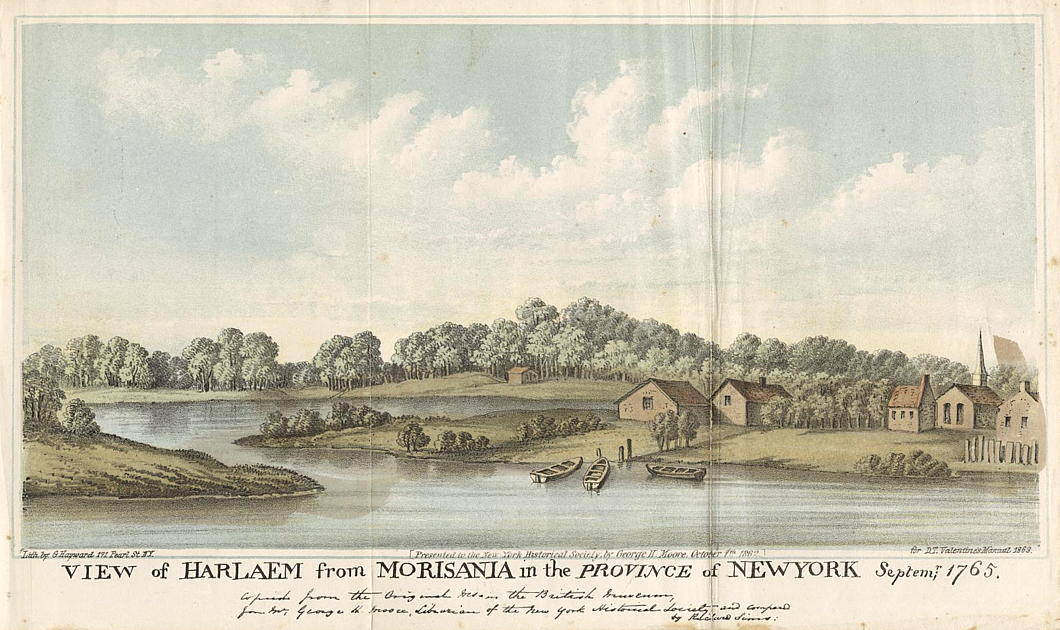Dutch Reformed Church
About Andrew Cusack
 Writer, web designer, etc.; born in New York; educated in Argentina, Scotland, and South Africa; now based in London.
Writer, web designer, etc.; born in New York; educated in Argentina, Scotland, and South Africa; now based in London. read more
News
Blogs
Reviews & Periodicals
Arts & Design
World
France
Mitteleuropa
Knickerbockers
Argentina
The Levant
Africa
Cape of Good Hope
Netherlands
Scandinavia
Québec
India
Muscovy
Germany
Academica
Old Church, Paarl
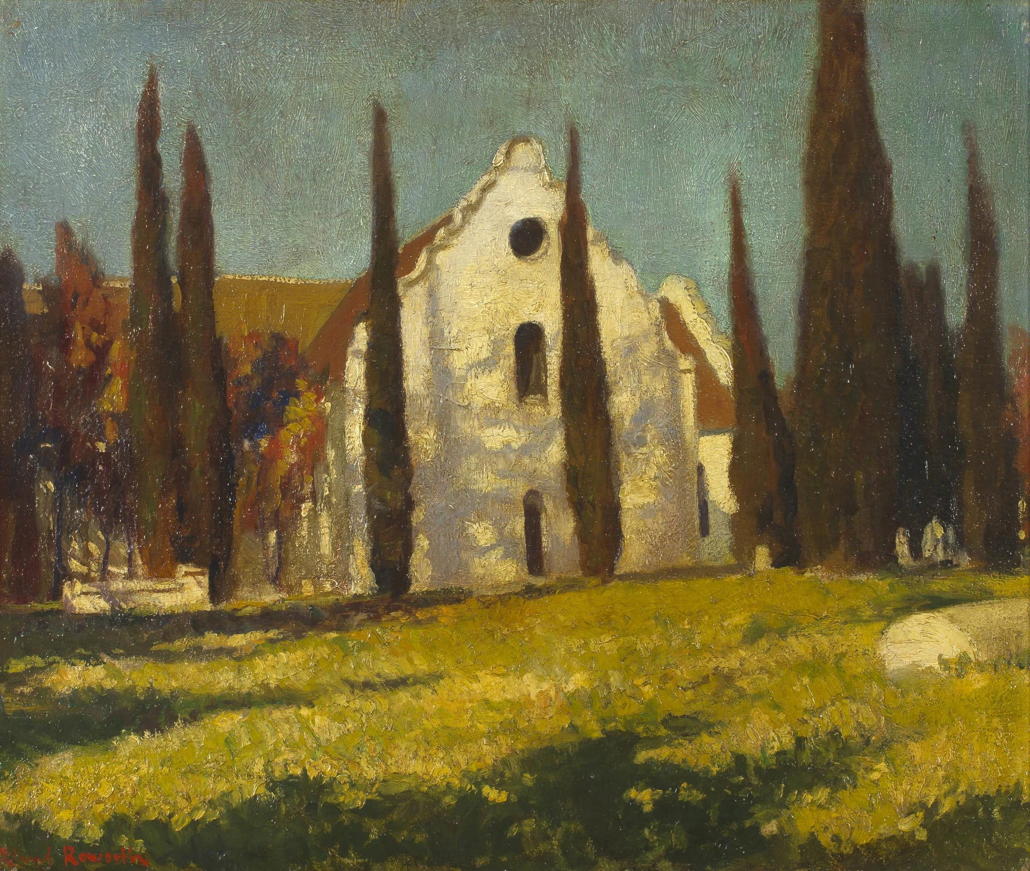
The church in die Paarl is the third-oldest NGK congregation in South Africa, after the Groote Kerk in Cape Town and the Moederkerk in Stellenbosch. It is often known as the Strooidakkerk (straw-roof church) for obvious reasons.
This part of the Drakenstein was first settled by Huguenots, where the dominee Pierre Simond preached in French from the foundation of the church in 1691 until he returned to Europe in 1702.
Harlem Reformed Dutch Church
For much of Manhattan’s early colonial history, the island was home to two primary settlements: the port of New Amsterdam (later, from 1664, New York) way down at the southern tip and the town of Harlem up where the East River meets the Harlem River.
Christened after the Dutch city, Harlem is one of Manhattan’s most visible links to the Netherlands. The local newspaper is even called the New York Amsterdam News, once a prominent voice in Black America given this neighbourhood became predominantly African-American in the early twentieth century, and Amsterdam Avenue runs up as the spine of West Harlem.

Harlem was founded in 1658, thirty-four years after New Amsterdam was founded and thirty-two since Peter Minuit bought the whole island of Mannahatta off the Indians for sixty guilders.
The town’s first church was founded in 1660 but didn’t have its own dedicated building for a few years. The Harlem Reformed Dutch Church, or Collegiate Church of Harlem, was built in 1665-67 right on the banks of the Harlem River, around the site of East 127th Street and First Avenue today.
Both the building and site was abandoned twenty years later when the congregation moved to its second building, completed 1687, just a little bit further south — near where East 125th meets First Avenue, or where the entrance ramp to the Triborough Bridge meets 125th.
It is this second building, which is depicted in the view above of Harlem village from Morissania across the river in the Bronx in 1765 (below).
High Church Dutch Reformed
Not even the peaceful hills and dales of the Hudson Valley were left untouched by the liturgicalism of the Oxford Movement
SUCH WAS THE influence of the nineteenth-century “Oxford Movement” in the Church of England that it engulfed the great preponderance of the Anglican Communion. It is surprising when you consider that Anglican priests and even a bishop were jailed in England for such scandalous acts as calling the Communion service “the Mass”, wearing vestments, and putting candles on the altar; these are now so widespread in the Church of England to be commonplace. But the Oxford movement also spilled out into other Protestant groups as well. The liturgical movement changed the Church of Scotland in the 1900s, and many of the Kirk’s medieval church buildings that had been converted into pulpit-centered preaching halls were reordered in a way emphasizing the “Communion table” that was an altar in all but name. (Those who can find before & after shots of the ‘Toon Kirk’ of Holy Trinity in St Andrews, Fife will notice this marked contrast).
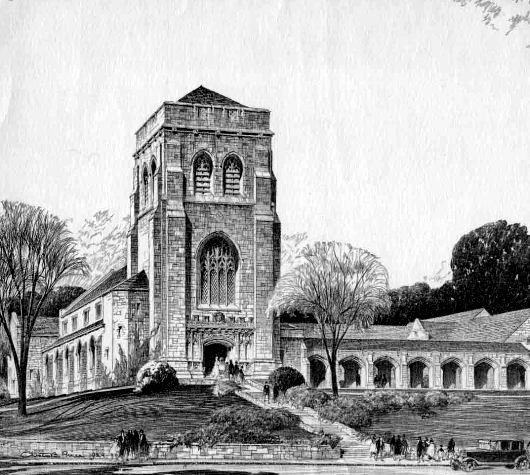
The Groote Kerk
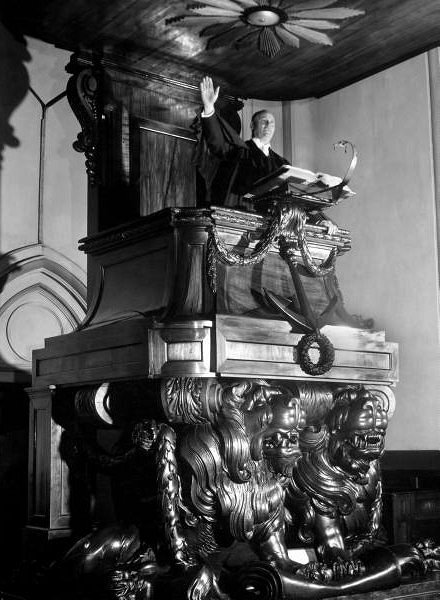
Dr. van der Merwe, moderator of the Dutch Reformed Church, poses in the splendidly carved pulpit of the Groote Kerk in Cape Town.
West End Collegiate Church
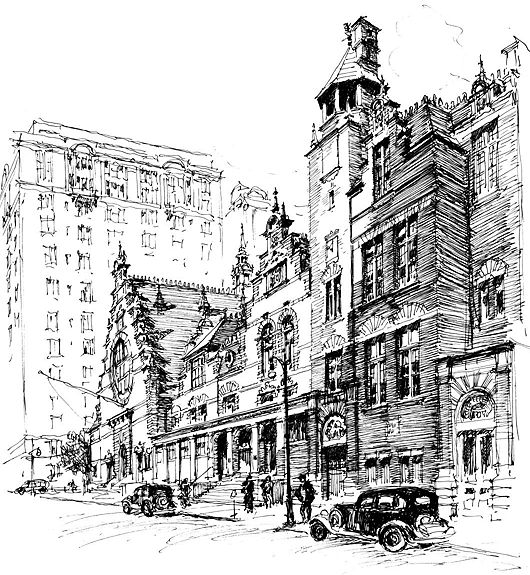
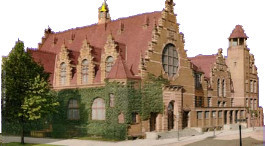 One of my good friends, who is amongst the most loyal denizens of this little corner of the web, found our post on St. Nicholas Collegiate Church of great interest because his son attended the Collegiate School, the oldest school in North America (founded in 1628, and formally incorporated ten years later). The Collegiate School is part of the same complex as the West End Collegiate Church on the corner of West End Avenue & 77th Street on the Upper West Side. The church & school buildings were designed by McKim Mead & White in a Dutch Renaissance Revival style, and handsomely executed.
One of my good friends, who is amongst the most loyal denizens of this little corner of the web, found our post on St. Nicholas Collegiate Church of great interest because his son attended the Collegiate School, the oldest school in North America (founded in 1628, and formally incorporated ten years later). The Collegiate School is part of the same complex as the West End Collegiate Church on the corner of West End Avenue & 77th Street on the Upper West Side. The church & school buildings were designed by McKim Mead & White in a Dutch Renaissance Revival style, and handsomely executed.
THE ARCHITECTS modelled the church after the seventeenth-century Vleeshal (meat market) of Haarlem in the Netherlands. The story goes that, during the Second World War, a handful of Collegiate grads serving together in the U.S. Army participated in the liberation of Haarlem, stumbled upon the Vleeshal and said “Hey, that’s our school!”
New York’s Dutch Cathedral
The Collegiate Church of St. Nicholas, Fifth Avenue
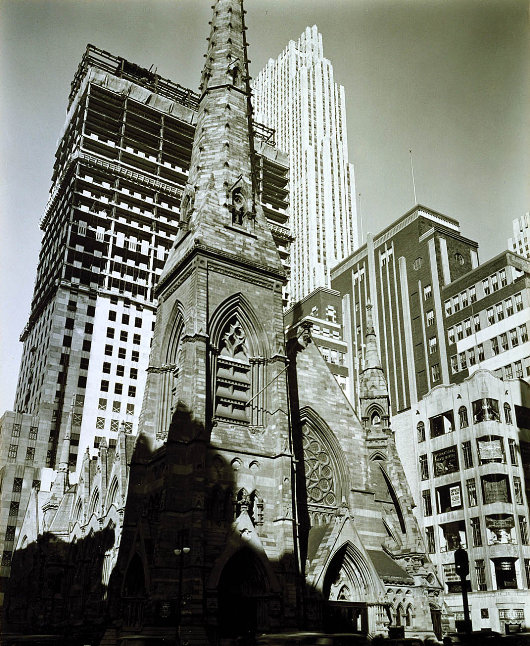
Dedicated a hundred-and-thirty-six years ago, the Collegiate Reformed Protestant Dutch Church of Saint Nicholas on the corner of Forty-eight Street & Fifth Avenue (photographed above by Berenice Abbott) was for many years regarded as the most eminent Protestant church in New York. The Collegiate Reformed Protestant Dutch Church is the oldest corporate body in what is now the United States, having been founded at the bottom of Manhattan in 1628 and receiving its royal charter from William & Mary in 1696. Now part of the Reformed Church of America, the Collegiate Reformed Protestant Dutch Church is actually a denomination within a denomination, and the remaining Collegiate Churches of New York tend to preach a sort of “Christianity Lite”. (The famous Norman Vincent Peale, author of The Power of Positive Thinking and one of the paragons of the “finding a religion that doesn’t interfere with your lifestyle” school of thought, was the pastor of Marble Collegiate Church at Twenty-ninth & Fifth, where Donald Trump is a member of the congregation).
Dutch Church, Kingston
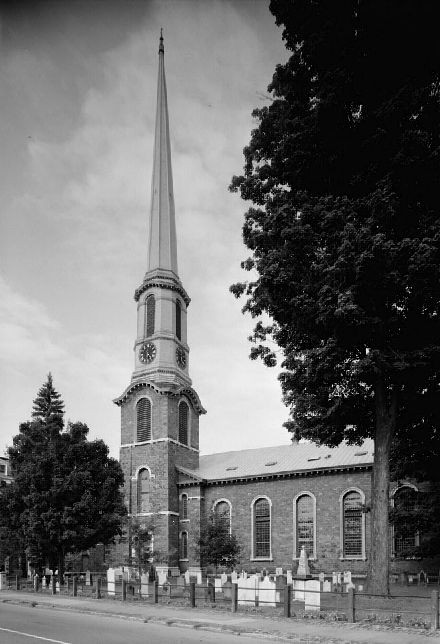
The Dutch Reformed Church in Kingston, New York.
Search
Instagram: @andcusack
Click here for my Instagram photos.Most Recent Posts
- Monsieur Bayrou December 18, 2024
- Dempsey Heiner, Art Critic December 17, 2024
- Vote AR December 16, 2024
- Articles of Note: 12 December 2024 December 12, 2024
- The Secret Chapel of Harkness Tower December 11, 2024
Most Recent Comments
Book Wishlist
Monthly Archives
Categories

